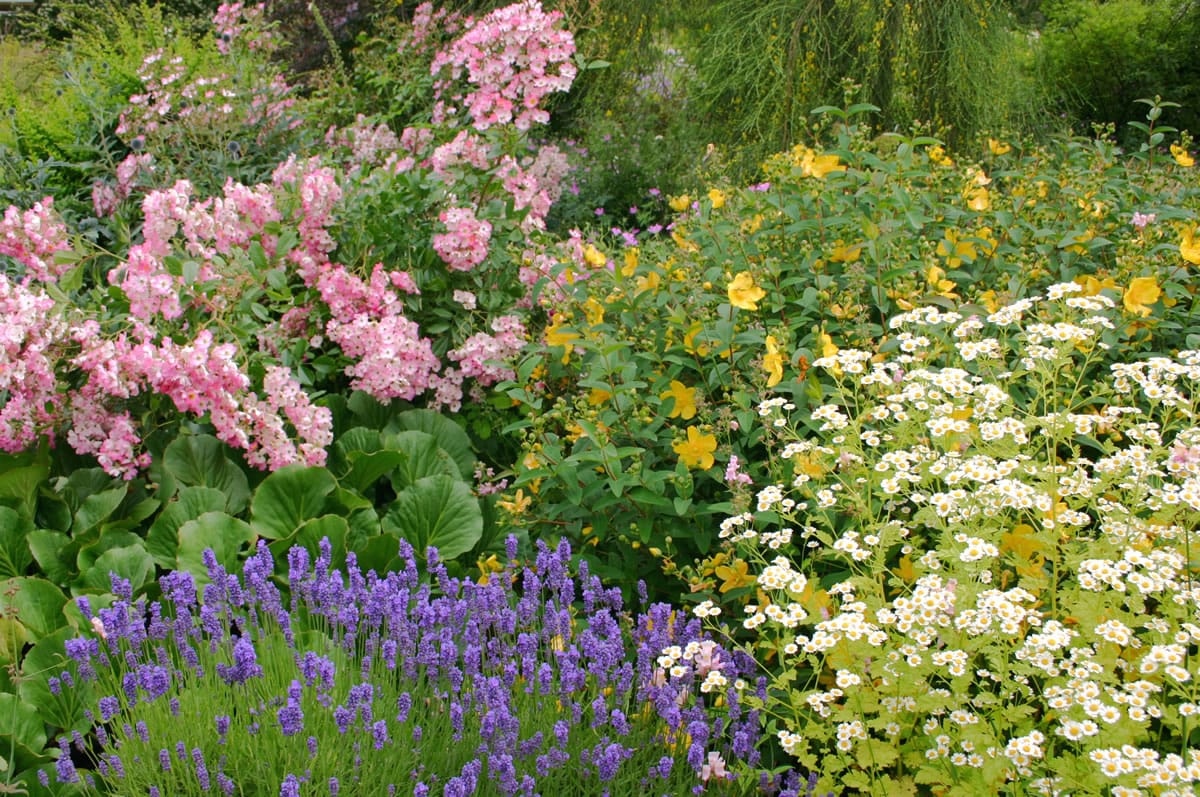By this time every year, there are a few plants in my garden showing signs of stress from consecutive days of direct sunshine, high temperatures and from lack of rain. In the past, I worried so much about my plants that I would spend whole days dragging a hose around the garden to stave off drought. Nowadays, to keep my garden looking its best, I continue to water through the summer months but I make an effort not to overwater. By that I mean that I give my planting beds and flowering borders enough water to thrive in the summer months but not so much that the plants have to rely on an unnatural water supply to merely survive.
In our modified Mediterranean climate, a cycle of wet months and dry months is the normal state of things. One of the advantages of a climate with continuous winter rain is that it helps plants prepare to withstand a period of summer drought. Even so, during a series of hot, dry days, we can expect our perennial plants in full sun to display a slight droop by late afternoon. Healthy plants will return to their rigid stature that evening or at least by the next morning. Pay special attention to the water needs of any trees, shrubs and other plants that have been planted within the past year.
New plants with limited root systems need enough water to get established. This is most important in the first season after planting but can remain critical into the second and sometimes even the third year if weather conditions have been poor and root expansion is slow. Typically, plants require more frequent watering in their first season in the garden. During very dry, hot weather, I water beds and borders deeply twice a week to keep plants healthy. Watering well means a thorough and systematic soaking of individual plants or planting borders in a specific time frame. A twice-weekly schedule of deep watering is preferable to infrequent overwatering or frequent light watering.
In certain situations, especially valuable plants may be watered individually during stressful climatic periods while the rest of the area is not given any extra irrigation. Various means such as mulching, shade, efficient irrigation methods and hardscape surfaces can be used to make the established landscape, as well as a new landscape, more water efficient. Since we can expect this same drought condition every year in our Northwest gardens, it makes sense to establish the groundwork for an efficient system as soon as possible.



